My Code
Design Process
My design process was mostly just choosing an idea and shape I liked and playing with the parameters. I took what we started with in class and played with the shapes for a while. First, I wanted to try some arch shapes where the ‘top’ and ‘bottom’ shapes were both on the same level. However, I really had a hard time finding any that really seemed interesting. From there I went back and tried my hand at adding rotations into the middle and top sections of the vessels and I started to find some shapes I really liked.

Vessel 1:
My first shape is pretty much a cup with smooth curls up the side from top to bottom. I like this shape because it is simple to come up with but also looks nice and can be useful.

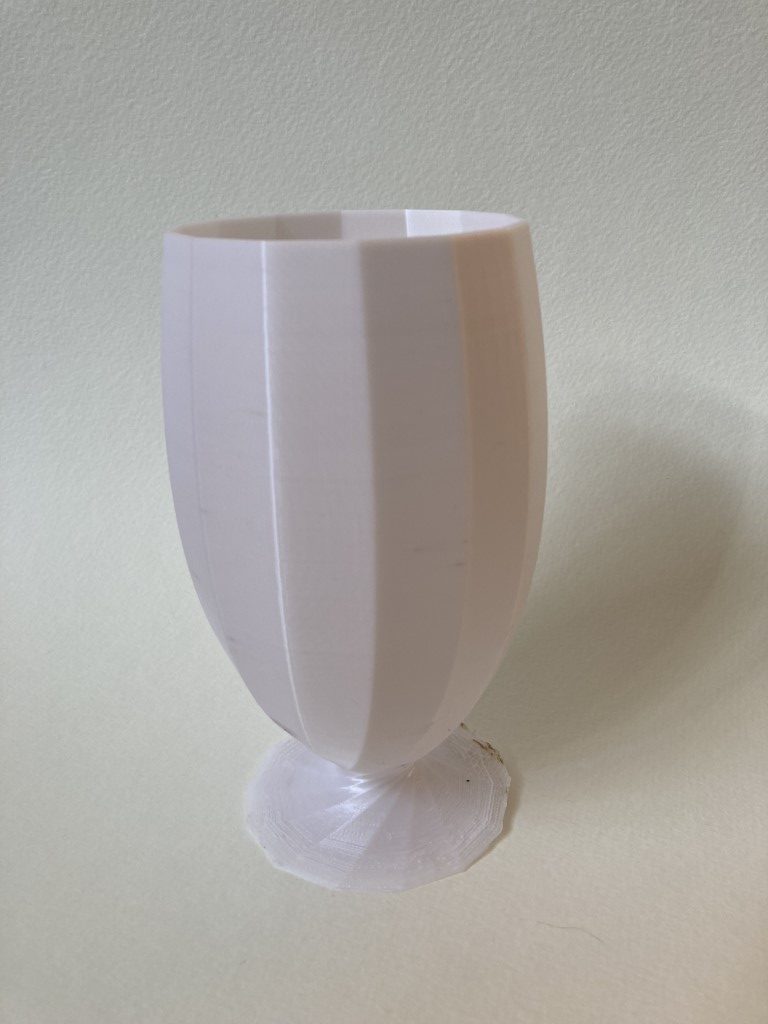

Vessel 2:
My second vessel started as a vase that you might put flowers in. While trying to get the correct surface to remove an idea struck me, what happens if I remove the sides of the vase leaving only every 2nd or 3rd intact? After removing 2 out of every 3 sides I found the vessel I wanted to print. I baked two copies of my parametric shape and over lapped then to get a criss-cross vase with. However, in just removing surfaces from the vase shape I ran into a big problem. While the 3D model for this looks amazing, loading it into Cura and slicing it showed that there was a major flaw to the design. When the surfaces are removed, they expose the open area inside where the surfaces surround. I tried for a few hours to find a way to connect the pieces that baking my design gave me but really did not make any progress. After a night sleep, I decided to give it one more shot before leaving the idea and moving on. I tried reducing the number of sides for my vase and this didn’t really seem to help much. The slicer still showed empty space where the surfaces cross at points in the vase. I did eventually find a way around this issue. I tried tweaking a setting in Cura called “Horizontal Expansion”. This takes thin areas of the print and expands them to the sides to try to fill in gaps in the model where the walls were too thin. As a second compromise to get a printable shape I was only able to remove 1 out of every 3 sides. I really wanted to print the more intricate version of this vase, but this was the only way I could get the shape to slice correctly. You can see the version with 2 of every 3 sides removed in my unprinted vessels photos.


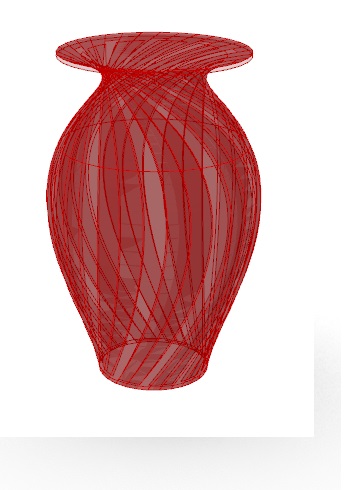
Vessel 3:
My third shape was the result of just looking for another shape I liked. It is a simple pentagon that has been stretched upwards and twisted 45 degrees and scaled down slightly for half its height, and then then scaled back and rotated back to its original orientation. This one strikes me as an amazing idea for a tall building. The sides both look to have a smooth curve, but also have triangular shapes that really fit nicely with the design.
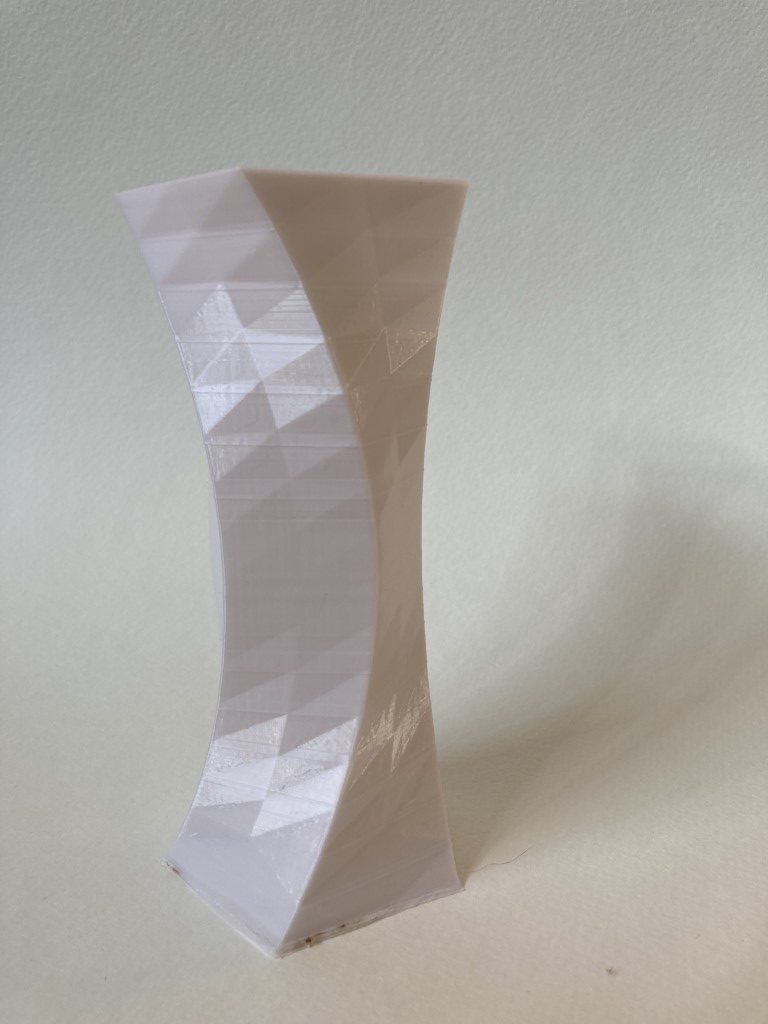
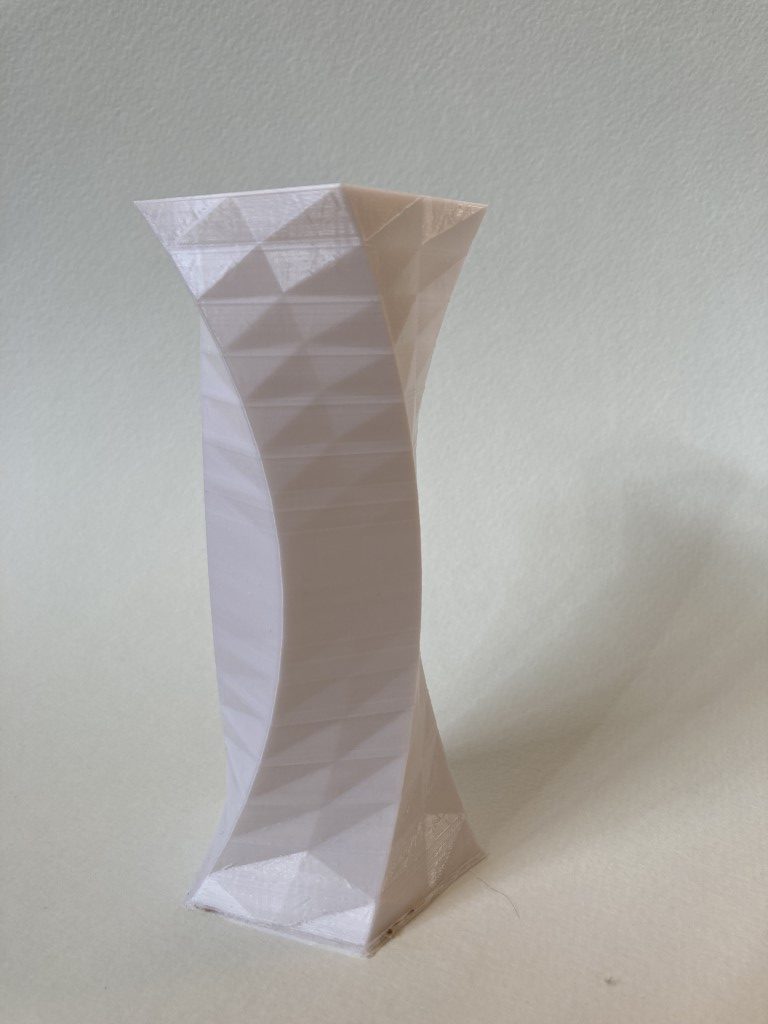
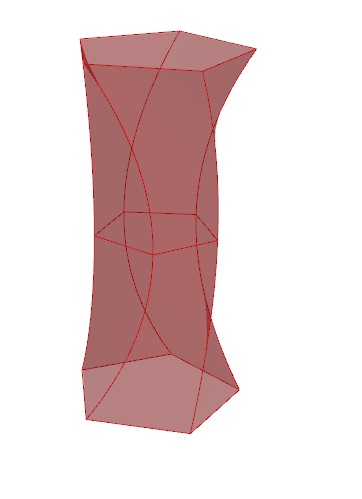
Unprinted Vessels:
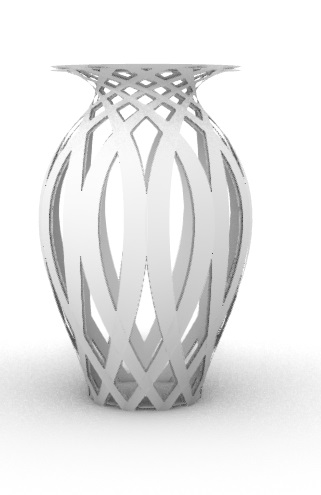
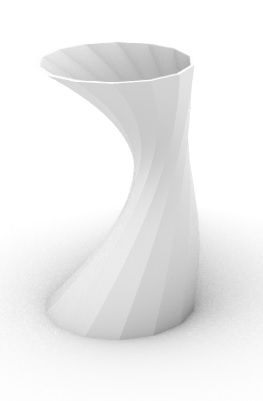
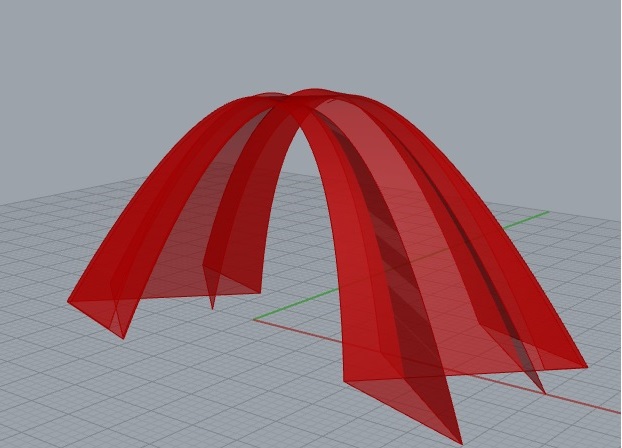
Reflections:
Using programming and 3D printing really allows for quick iteration on designs and being able to easily see what the product can look like. Being able to quickly change the number of sides, radius, angles, and location of certain pieces really allows you to find a shape or curve that stands out to you. Sometimes you can even stumble across something that you would have not thought of otherwise while just changing a setting at random. The best part about parametric design is the exploration it allows without the same time commitment other methods might need. For me the limits of the parametric design process are mostly my familiarity with designing an object this way, and the setup required to get a starting point. I think that a combination of the user defined shapes and parametric design might be the best of both worlds. While it might be difficult to describe in code how to generate a complex curve, drawing it by hand and then making slight adjustments on the computer seems like the best approach.
To design my forms I mostly just experimented with parameters. I think my best idea was removing the faces from the side of an object and not just the top. However, this is really where I ran into most of my problems with this project. In some ways I felt like Rhino, or maybe my lack of experience with it, really was a hindrance to my design. When starting with only surfaces and removing them there seems to be little I could find to fix my design, and I really don’t have an idea of another way to go about doing this in another way. I think this is a challenge in any form of creation, figuring out how to go from an idea in your head into reality. I do feel like I made personal choices and judgements that gave me a figure that I can call my own. While my shapes are not particularly difficult or unique, the fact that I got to choose the angles, heights and other parameters really make it mine. This design process gives me the same feeling of authorship that other process because I still had to put in the work to get a successful print. I get the same feeling from figuring out a design and then implementing it as I do in any other building process.
The shape with the empty spaces is astonishing. Well done
Each of your vessels are very solid and nicely printed. I really like how you separated your post into each individual print. On the first one I really like the shape of it. It almost reminds me of a really fancy cup. The second one with the cut outs make it very artsy and remind me of a lamp. The third shape with the design on the outside looks very clean and modern. The amount of twist that it has on it makes the design look more complex. I agree with you that since I have not have previous experience to Rhino, I didn’t quite know how to use the features and create the design that I had an idea of in my head.
I appreciate the simplistic, yet creative design throughout each of your vessels. Each of your vessels are wonderful, but your second vessel is one of my favorites I have seen. Removing every 2nd and 3rd side proved to make a something great and I am glad you were able to print it, even after all of the trouble Cura caused you. Sometimes, I also feel that my inexperience with Rhino can cause a creative blockade and could hold some people back from truly spreading their design wings. Overall, everything looks absolutely amazing and I will continue to look forward to your future designs and prints!